Taylor Johnston had been a gardener for 10 years before she came close to finding the workwear she craved.
“I never found anything that reflected me or made me feel polished and professional,” she says. “I’d really gotten used to dressing like little orphan Annie or like a little boy.”
For a while that tactic worked just fine, but it changed on a special day at the Isabella Stewart Gardner Museum in Boston, where Johnston was tasked with hanging the nasturtium—a 30-foot vine that the museum grows from seed and displays every April.
“When I rounded the bend, I heard someone say, ‘child, move the vine so I can see your face,'” she remembers. That person just so happened to be legendary photographer Bill Cunningham . “My first thought was, ‘shit—I can’t believe I look like this right now,'” Johnston recalls.
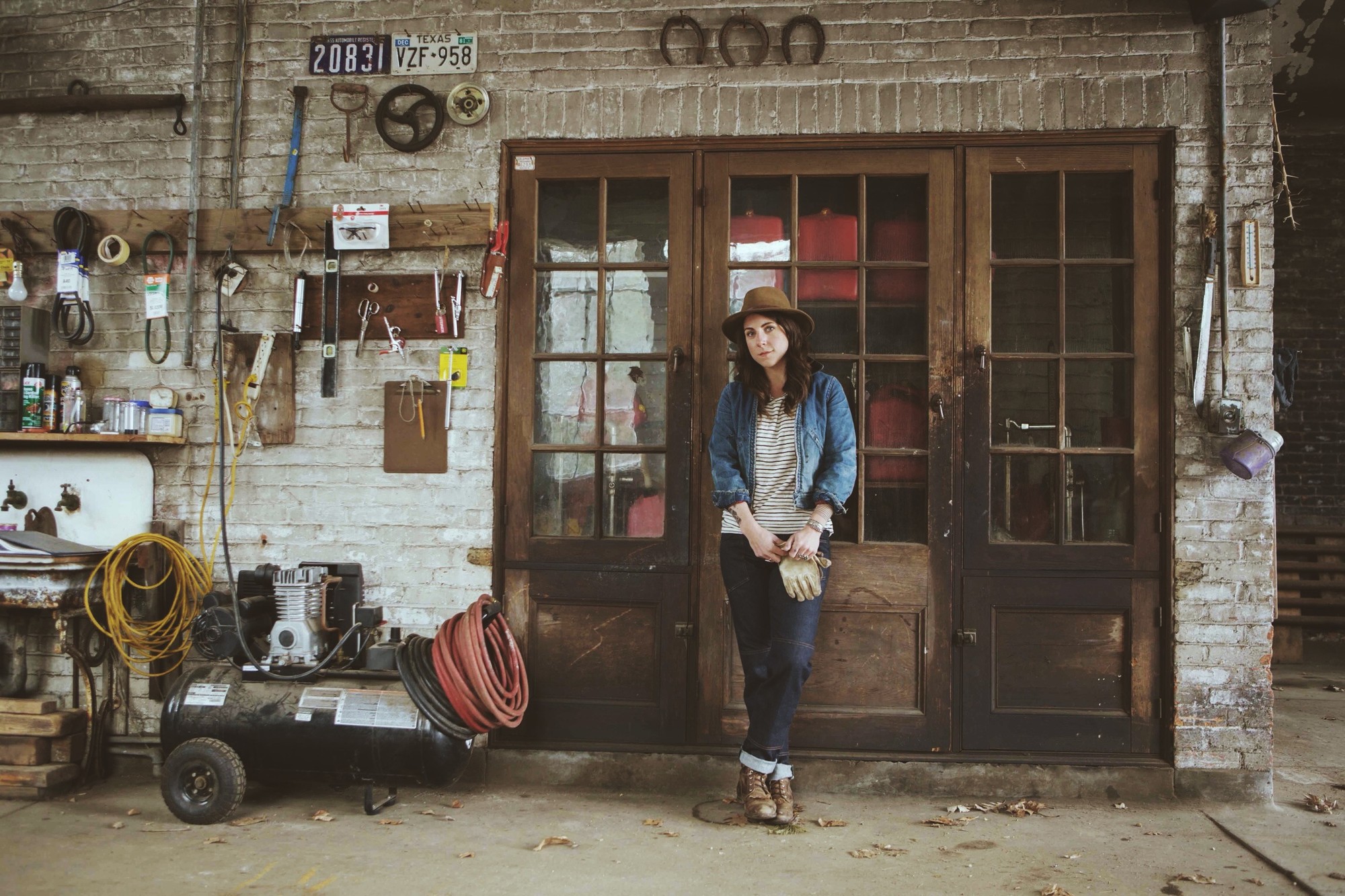 Gamine’s workwear strives to be as stylish as it is useful. Photo by Winston Macdonald
Gamine’s workwear strives to be as stylish as it is useful. Photo by Winston Macdonald
That event prompted her to connect with a pattern-maker at Levi’s , who worked with Johnston for three years on the nuts and bolts of creating clothing. In March 2014, she officially launched Gamine , a line of sustainably crafted and durable workwear made here in the United States. While the line is for anyone, trades requiring hard, physical laborers were top of mind during the ideation process.
“It speaks to a modern version of a woman who works with her hands—for some reason we stopped thinking about that person,” she notes. Clearly, she wasn’t the only one who felt this way—the collection has garnered fans quickly.
“A lot of women get in touch to express how grateful they are that they can find a 35-inch inseam or a super petite size—especially when it’s made in a material geared towards real life and actual hard work,” she says.
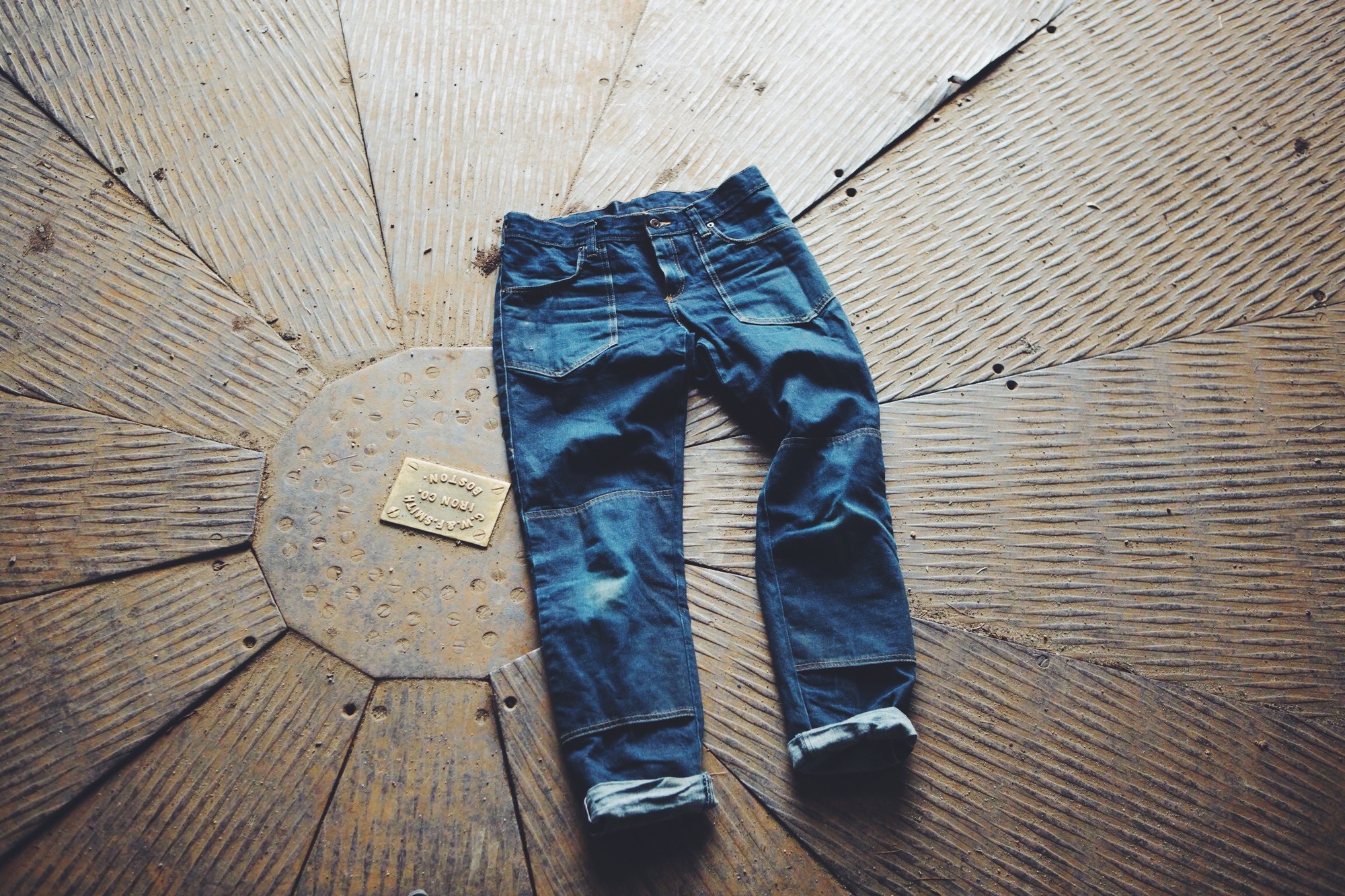 Taylor Johnston’s jeans for the working woman. Photo by Winston Macdonald
Taylor Johnston’s jeans for the working woman. Photo by Winston Macdonald
Chef Maxine Thompson took a similar necessity-driven approach when she created her line of custom made trousers, called PolkaPants , which she launched just this February.
“I would buy a lot of trousers online from ASOS or Zara, but when I would scrub down the stoves they would bleed all over my chef coat,” she says. When she began talking to other female chefs and realized they shared the same issues, she turned to her fashion design background and got to work, creating a high-waisted and cropped style that is as fashionable as it is pragmatic.
“Generally, a woman’s hips are the largest part of her body, so the high-waisted look is a flattering one and a comfortable one,” she says. “It’s also important that when you bend over you don’t have your knickers sticking out.”
In addition to looking good, the slim fit serves a purpose, as well.
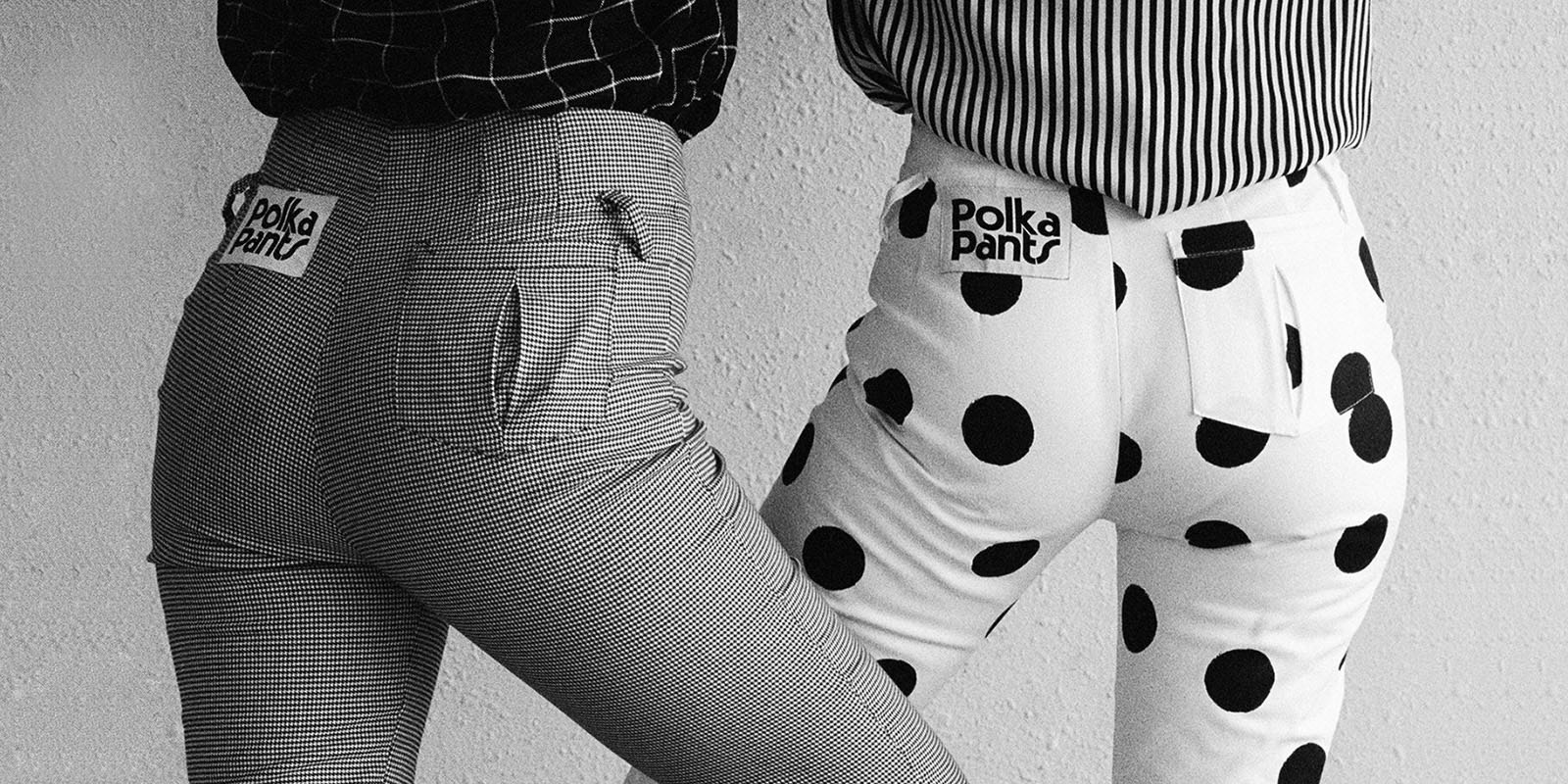 Polka Pants are Chef Maxine Thompson’s stylish take on women’s chef uniforms. Photo via Polka Pants
Polka Pants are Chef Maxine Thompson’s stylish take on women’s chef uniforms. Photo via Polka Pants
“Baggy clothing in the kitchen is actually more of a hindrance than a help because you’re constantly tripping over yourself,” she says. “That’s why they’re cropped — I was forever having to roll my gigantic chef trousers up, and I’m an average height.”
The pants come in three patterns — black, houndstooth, and the original polka dot, which was inspired by a pair of trousers Thompson made herself when she was in fashion school. There’s more on the way, too: a pair in baker’s white (ideal for flour-slinging pastry chefs) and a collaboration with a U.K.-based chef.
Collaborations are a source of inspiration for chef wear makers Tilit , as well. The New York-based company recently teamed up for an apron design with Charleston’s Bad Bitches , who throw events benefitting continuing education for women in the hospitality industry. “It’ll be a very women’s-specific apron focused on solving the issues they’ve encountered in finding something that fits them perfectly and makes them feel comfortable,” says Tilit co-founder Alex McCrery.
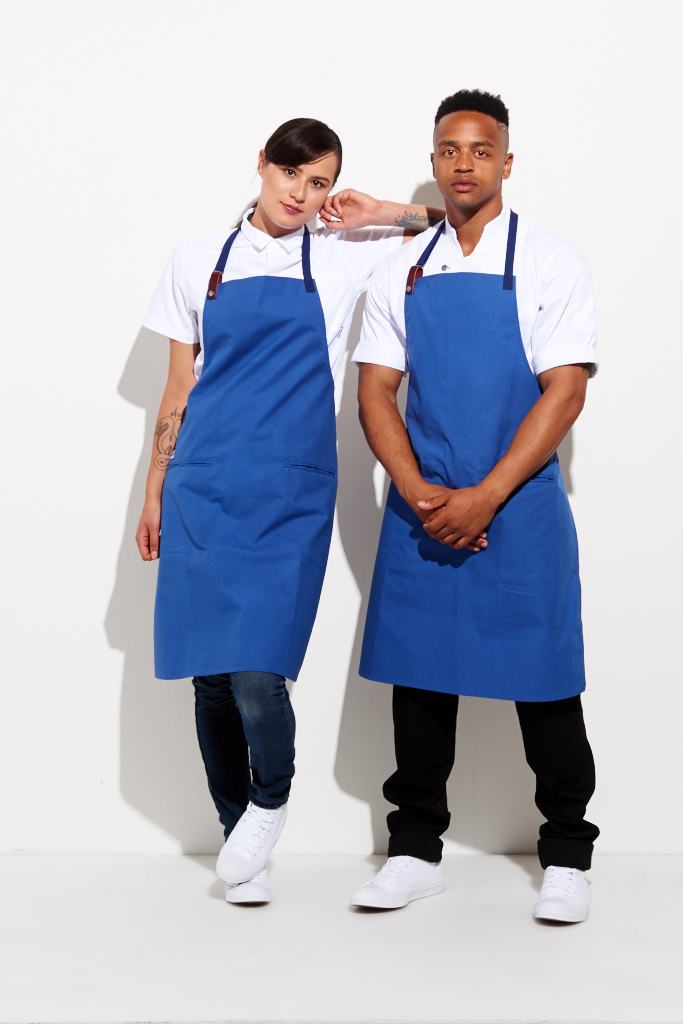 Tilt makes clothes that fit a range of body types and chefs. Photo by Greg Vore
Tilt makes clothes that fit a range of body types and chefs. Photo by Greg Vore
It’s that feedback that has informed much of their workwear line, which they launched in 2012 when McCrery was fed up with the ill-fitting chef wear options available at the time. “We sent out surveys and asked clients what they wanted to see in a women’s chef coat,” he says. “What they told us was, ‘We want to look exactly like the other chefs but we don’t want to wear a big box, we want it to really fit us’ — and we listened.” Those conversations led to three chef coats made specifically for the ladies—all of which are suitable for curvy body types, to boot.
“The double-breasted coats on women who are a little bustier can pull across the buttons, so we made the exact same coat but offered it in a D size to make sure they fit appropriately,” notes co-founder Jenny Goodman.
It was one friend, in particular, who prompted the creation of another ladies-only garment: the utility dress. “She’s a private chef who does a lot of events and was like, ‘I don’t want to wear pants and a coat because I’m really comfortable in a dress,'” says Goodman. That chat morphed into a dress made in three different fabrics, complete with an apron tab at the back neck, armpit vents, and a hidden placket and drawstring waist made for adjustable shaping. Insanely thoughtful details like those ones are part of the reason Tilit is worn by staff in more than 500 restaurants, including New York hotspots like Charlie Bird , The Dutch , Soho House , and the Standard Hotel .
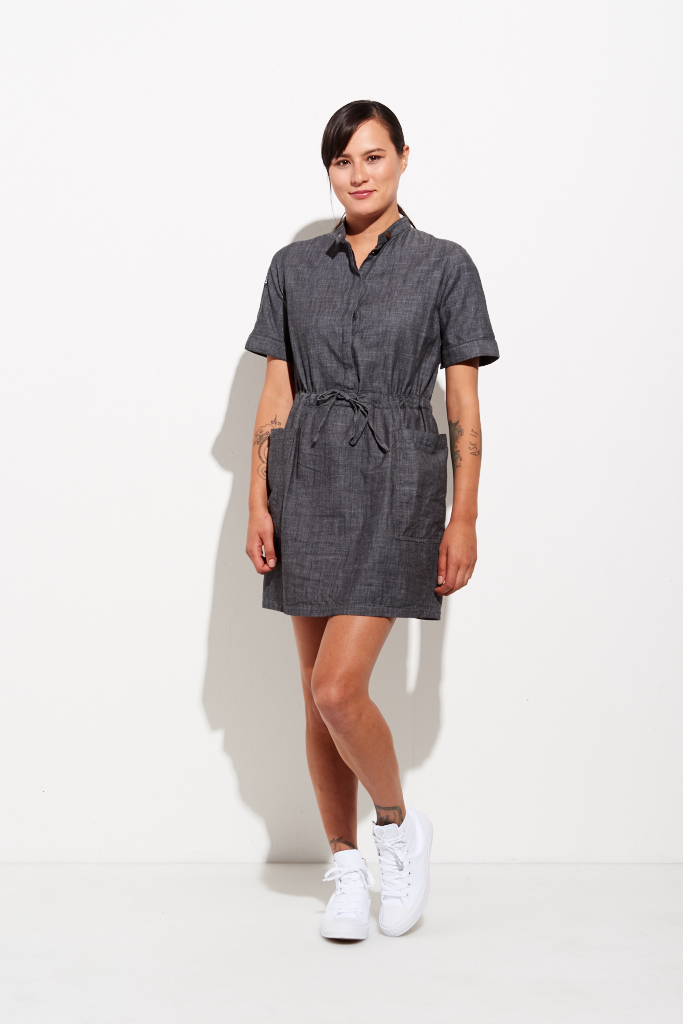 The utility dress was inspired by a private caterer. Photo by Greg Vore
The utility dress was inspired by a private caterer. Photo by Greg Vore
It’s an increased demand that Goodman and McCrery are happy to produce for.
“The numbers of women in hospitality are growing, finally—there are a lot of women in charge of the kitchen and they deserve to look just as professional and feel just as good as their male counterparts and peers,” Goodman says.
Thompson agrees. “If you’re comfortable in what you’re wearing, it extends to your cooking,” she says. “Just because you work in a kitchen there’s no reason you shouldn’t be comfortable and look like you care about your appearance—you should be able to feel feminine.”










